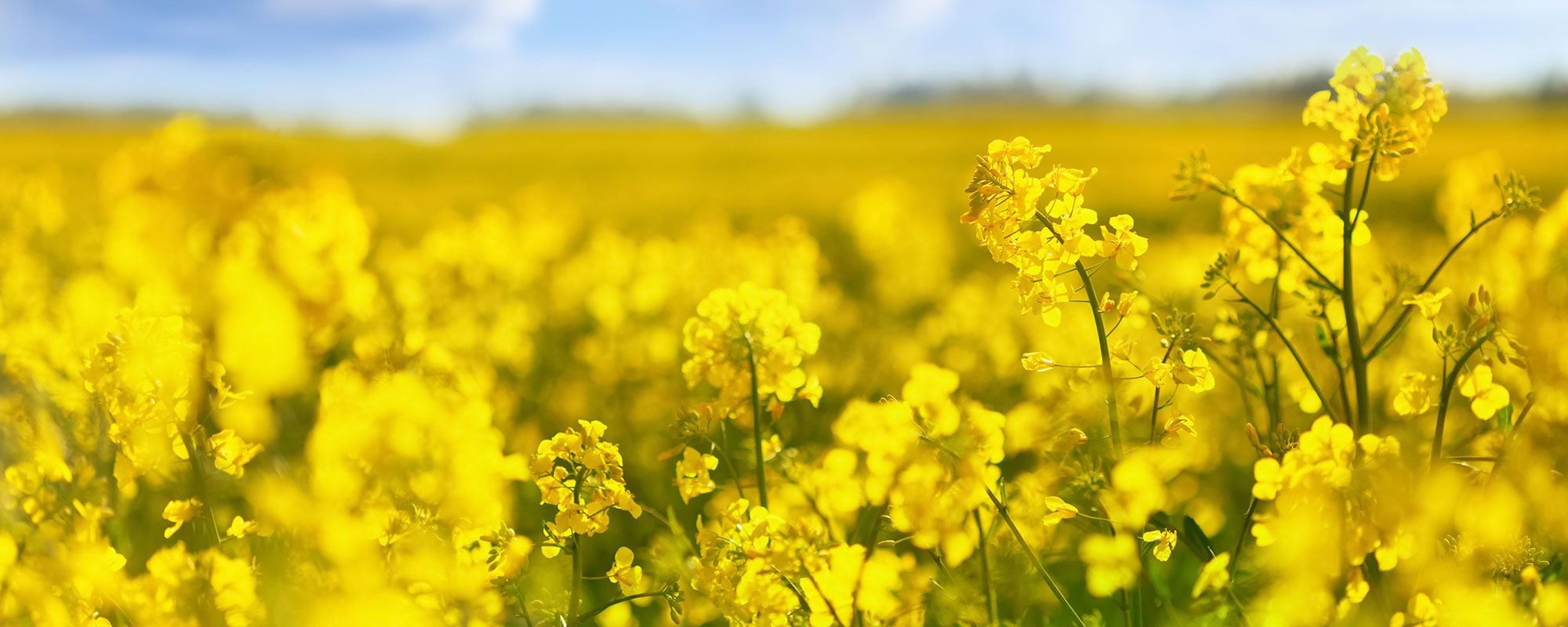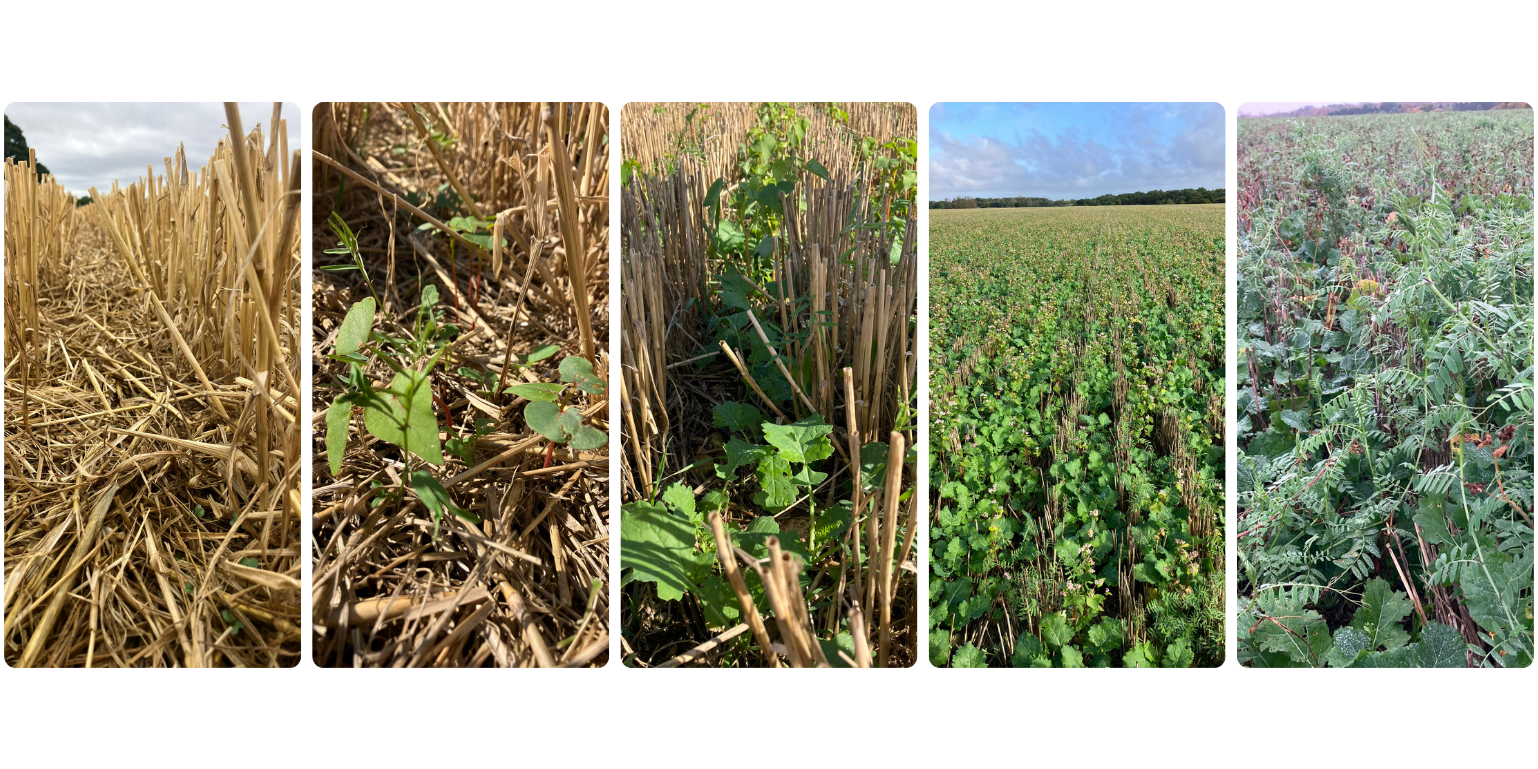
It is the million-dollar question on farms up and down the country: how do you get oilseed rape through the dangers of cabbage stem flea beetle (CSFB) to set it up for a profitable return? The struggle to answer this has caused many farmers to move away from the crop, leading to harvest 2025 being the lowest OSR acreage for 40 years.
But for some farmers, piece by piece, the jigsaw is coming together. They are discovering it is a case of marginal gains and a switch to a more sustainable farming system, which benefits every crop in the rotation. “It’s like the Dave Brailsford method,“ says Ben Wilson, Farm Manager at Glympton Farms, on the edge of the Cotswolds in Oxfordshire. They have gone from OSR being on the verge of leaving the rotation to a consistent performer.

Until a shift in strategy in 2019, the farm had a three-year rotation of milling wheat, spring barley and OSR. Like many other farmers, Ben established OSR using an auto-cast system mounted to a min-till cultivator.
In the ten years before the 2013 ban on neonicotinoids in OSR, Glympton Farms averaged 3.27 t/ha, a respectable return on their droughtprone soils. However, since the ban, this dropped to 2.57 t/ha, leading to a review of OSR’s place in the rotation.
“At that point, I came up with some cultural control measures, which I wanted Ben to implement,“ says Peter Carr, Agrii agronomist. “The first year, we didn’t quite get things as we wanted them to. Last year, we successfully lined up everything, and this crop yielded 3.43 t/ha, which is back up to where we expected yields to be before the (neonicotinoid) ban.“
Their first step was to extend OSR in the rotation to one in five.
“We’ve gone into fifths,“ explains Ben. “There is two-fifths wheat, one-fifth barley, one-fifth OSR and one-fifth beans. This autumn, we have changed it further to split the barley and beans into spring and winter sown options depending on how a field scores in our black-grass traffic light system.“
Ben is passionate about improving soil organic matter to build fertility over the long term. To this end, they apply chicken litter from a neighbouring farm, compost, and farm yard manure from the farm’s pedigree Aberdeen Angus herd. This autumn, five years after they changed the system, Ben and Peter retested the soil and found that soil organic matter had increased by 0.7% on average across the farm.

to suppress weeds.
Left: chopped straw, Right: bare ground
The new strategy was stitched together by a move to direct drilling using a Horsch Sprinter. Peter says they have found that it allows fast drilling in windows before forecasted rain and conserves soil moisture without stimulating large weed burdens.
Getting through the beetle
“We’re cutting stubble long, at 20-30cm, and anything before OSR is chopped. This means that the burden of straw on the soil surface is about 15mm, so you don’t get a thick 50mm mat of straw, which is associated with high slug pressure.
“The long stubble acts as a physical and visual barrier to CSFB. You can’t tell there’s OSR being grown on the farm until October because the plants are so well hidden in the stubbles,“ says Peter.
With 500 acres of woodland on the farm, pigeons are a big problem, but Ben says the long stubbles and companion crops have helped to stop them from landing in crops as easily.
“The most impressive thing with the chopped straw layer is how it has helped with weed seed suppression; it’s led to a 40% reduction in herbicide use,“ adds Peter.
An application of poultry manure balances the carbon-to-nitrogen ratio of the chopped straw and provides some available nitrogen in the autumn to build biomass ahead of winter, explains Peter.
“Agrii has looked extensively at the effect of urea volatilisation on CSFB in trials. Adult CSFB are attracted to brassicas through their specific exudates, especially when stressed. In our case, ammonia and sulphur volatilisation from the poultry manure is masking the brassica pheromones from CSFB.“
The drilling date for Ben’s OSR is dependent on moisture not fixed to a specific calendar date. “You have to have the seed-to-soil moisture contact. If you can time it before a rainstorm, then that’s ideal.“
They opt for a vigorous conventional variety with strong spring growth to get the growing point away in mid-February, in this case, Amarone. “It’s a steady grower through the autumn and then Glympton Farms OSR: August 2024 to February 2025 really moves as soon as the soil warms up in the spring,“ explains Ben.
The drill is slightly offset against the previous wheat crop to plant between the rows of stubble, keeping it intact and allowing the OSR roots to utilise the old root system of the wheat crop.
8 kg/ha of buckwheat and 4 kg/ha of purple vetch are used as companion crops. The buckwheat provides a canopy over the OSR, and its roots mine phosphate, which is released to the crop roots later when the frost kills it. By leaving the vetch in the crop for as long into the spring as possible, it can fix 30 – 50kg N/ha.
Micronutrition is applied much earlier than usual, at two to four true leaves. Ben got the idea after listening to an entomologist on a podcast discuss how plant nutrition can deter pests on broad-acre crops.
“I did some more research on it and discovered evidence to show that molybdenum, magnesium and boron help at an early stage,“ says Peter. They say it returns to the principle of not letting the OSR be stressed and, therefore, more attractive to any CSFB in the area.
Their measures have paid off again this year, with Glympton Farms OSR coming through the risky autumn period full of promise in the spring. Peter and Ben hope it will at least match last year’s output.
A team effort
It is apparent that successfully assembling a complex series of agronomic measures can only be achieved with Ben and Peter working closely together. They see it as a partnership where Ben brings outside-the-box thinking, and Peter references it to the available scientific data to support their decisions.
“Peter brings the science, but for me, there’s more of a gut feeling about. If it feels like the right thing to do and it makes logical sense, then that’s the direction we are heading, which seems to be what we were doing 50, 80 or 100 years ago,“ says Ben.

OSR: August 2024 to February 2025
The “Dave Brailsford“ steps undertaken on Glympton Farms
- Extended rotation:
Moving to one year in five for OSR. - Direct drilling:
To conserve moisture and not stimulate large weed burdens. - Long stubble:
Physical and visual barrier to CSFB and pigeons. - Chopped straw:
Retains moisture and provides a weed barrier without causing a slug problem. - Poultry manure:
Balances the carbon-nitrogen ratio of the chopped straw, provides some available nitrogen and masks the brassica pheromone, which attracts CSFB.
- Companion crops:
Hides the OSR, hosts CSFB predators and provides additional phosphate and nitrogen to the crop. - Early micronutrition:
Improves plant health and reduces stress. - Variety choice:
A vigorous variety with strong spring growth is crucial for getting the growing point away in mid-February. - Inter-row planting:
Keeps the stubble intact and helps rooting. - Livestock integration post-harvest:
Reduces larvae carry over to the next crop.


